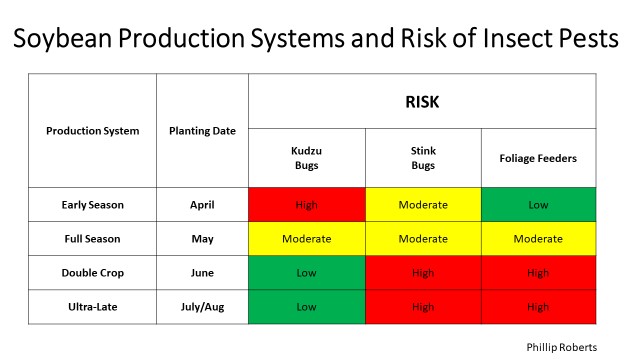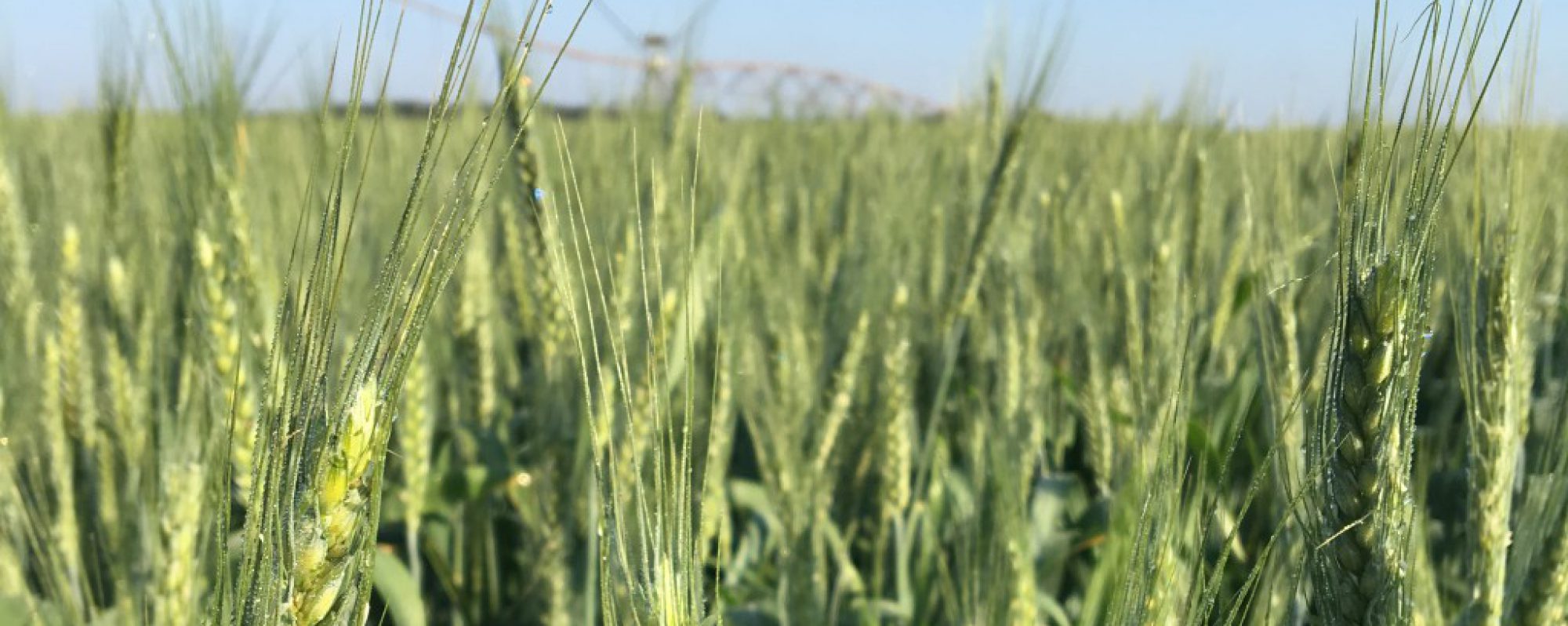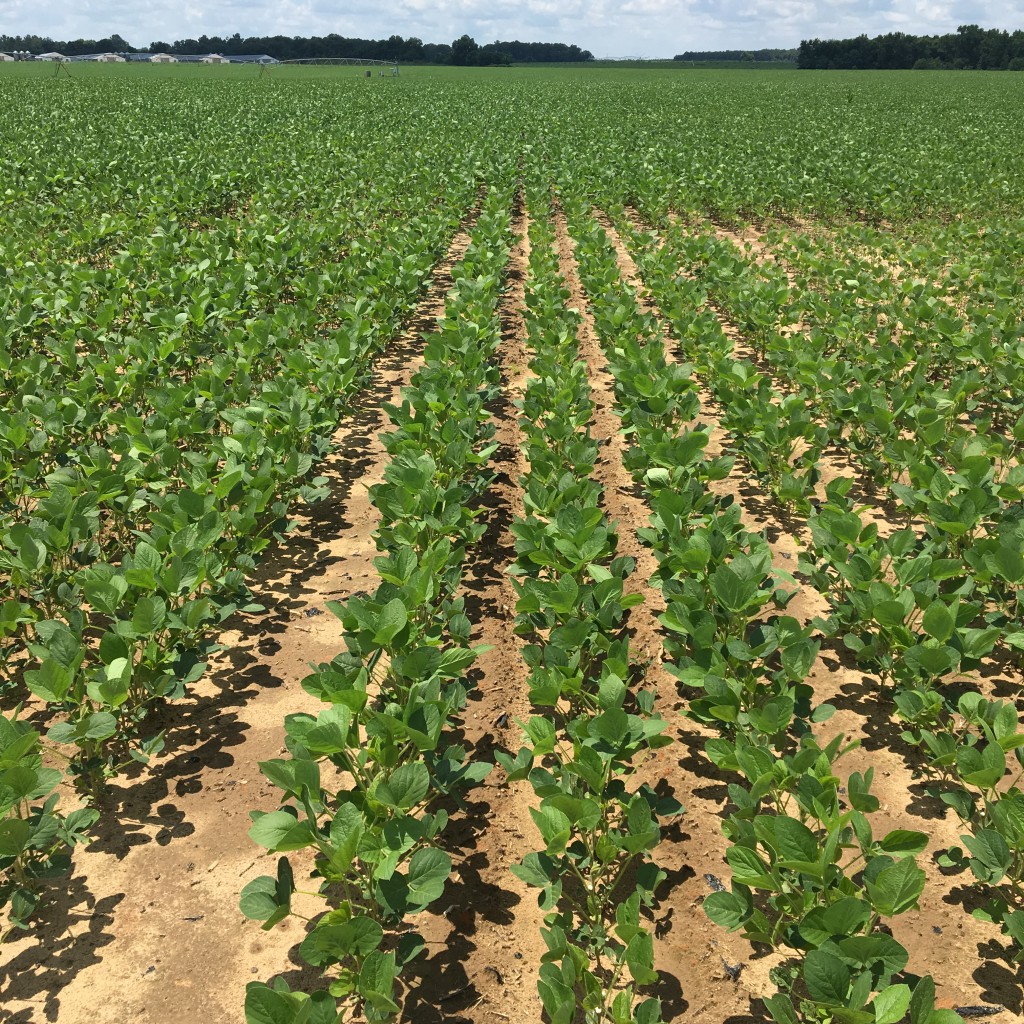
Here is our Group 3 soybeans planted May 16th in Wilcox County that are blooming now. They have received more rain on the north side of the county, but also growing well with some sunshine this past week. We’re also working with UGA Extension Scientist Dr. George Vellidis on finalizing details of the new soybean irrigation app. He’s got 2 locations in the state where we are watering half the field based off the soybean app recommendations and the other half the way the grower normally waters. Clayton and I go out and check growth stages to compare to the app. Here is Clayton, Dr. Velledis and Bill in the field last week:
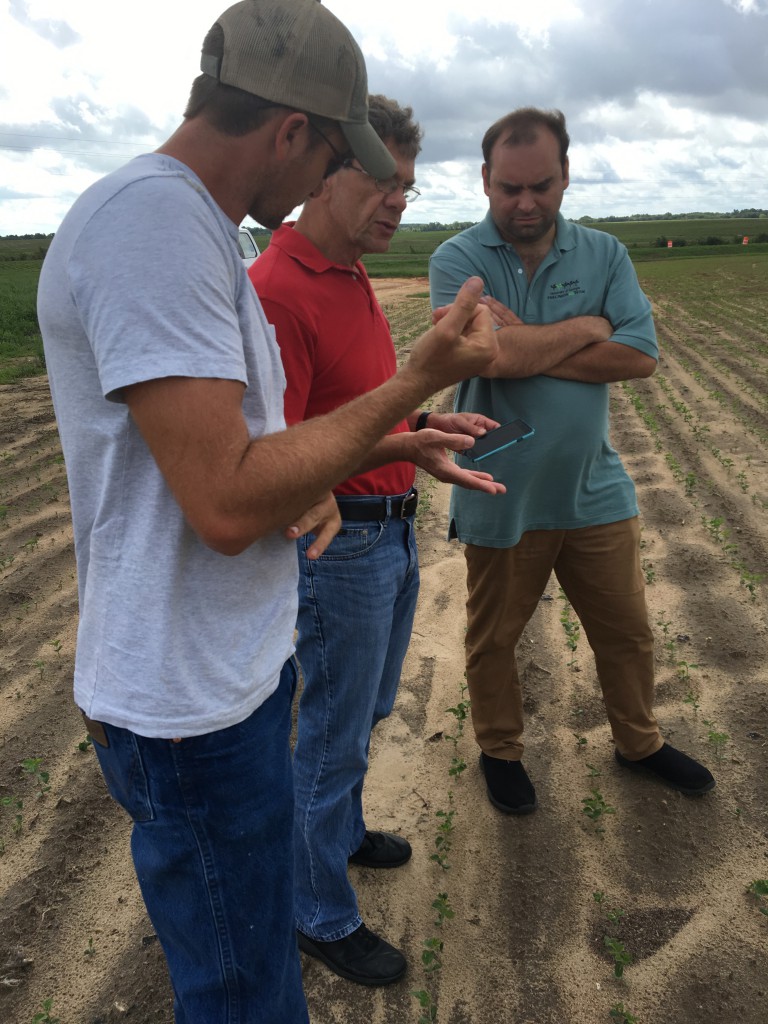
Here is an update from UGA Extension Agronomist Mark Freeman:
With the cotton planting window coming to a close and not all of our planned cotton acres getting planted, some growers will switch over to soybeans. This is some late planted soybean agronomic and management tips that may be useful especially to some of the newer agents.
First, like cotton, planting date plays a tremendous role in maximizing the yield potential of a soybean crop. In Georgia the optimum planting window for soybeans is May 10th thru June 10th; however, the planting window can be extended through June 30th if well adapted late maturing varieties are used. Although the planting window can be shifted later, timeliness of planting is still key and one should still expect yield potential to decline about ½ to ¾ bushel/A for every day planting is delayed after June 10.
Matching the correct soybean maturity group with the current planting date is also critical as many of the early maturing varieties have a narrower planting date window. If these early varieties are planted too late in our southern latitudes the photoperiod response induces flowering before obtaining adequate growth necessary for optimum yields. Graph 1. illustrates how soybean maturity groups react when planted at three different planting dates.
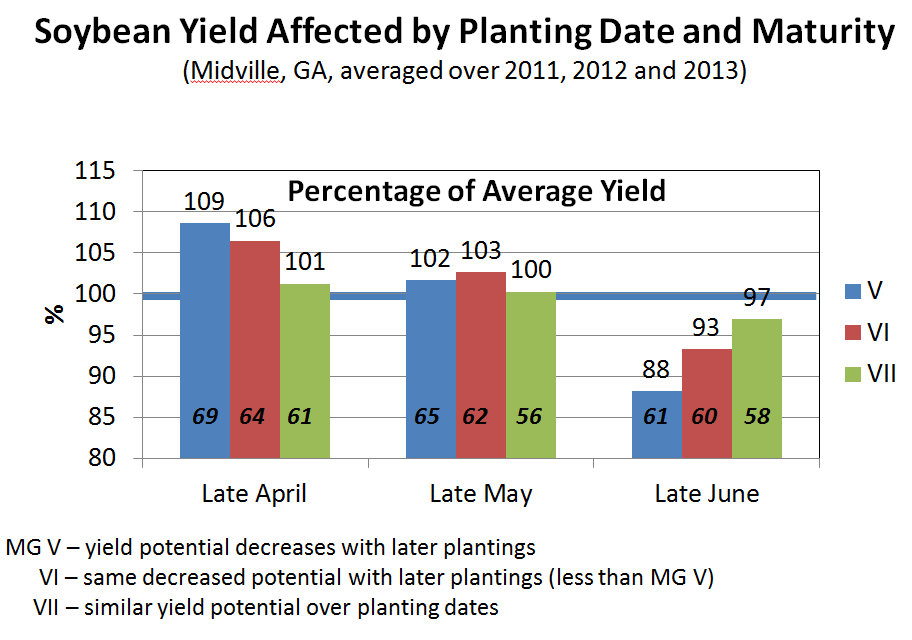
Considerations should also be made for seeding rates with later planted soybeans. Positive yield responses to higher seeding rates are more likely to occur in June and July compared to May due to plants having less time to grow vegetatively. In this scenario “More Stalks = More Yield”. Research from 2011 and 2012 shows the impact that seeding rate has on soybeans planted in May, June, and July. Graph 2.
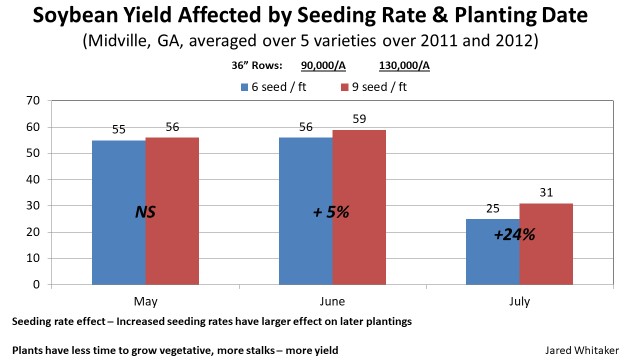
Similar to seeding rates, the benefits of reduced row spacings are also increased as planting dates are pushed later. Research in Georgia has demonstrated a yield benefit of 0.7% for each inch that the row is narrowed, when compared to 36” rows. Although altering row spacings can be very expensive, one option growers may have is planting soybeans in a twin-row configuration. Planting late soybeans in twin-rows could be a way for farmers who already utilize twin-row planters for peanut a way to obtain narrower row spacings without altering equipment. Outside of the yield advantages from narrow rows, there is a considerable weed control benefit from the quicker canopy closure.
Pest control is another issue that we need to be aware of. Generally late planted soybeans are at high risk for both stink bugs and foliage feeding caterpillars later in the season. It is important to be able to identify the insect pests and be able to determine when those pests are at treatable levels. It may also be beneficial to apply Dimilin at the R2-R3 growth stage as a preventative insecticide for control of velvetbean caterpillar and green cloverworm. Below is a chart from extension soybean entomologist Dr. Phillip Roberts highlighting the different soybean production systems and their risk to insect pests.
